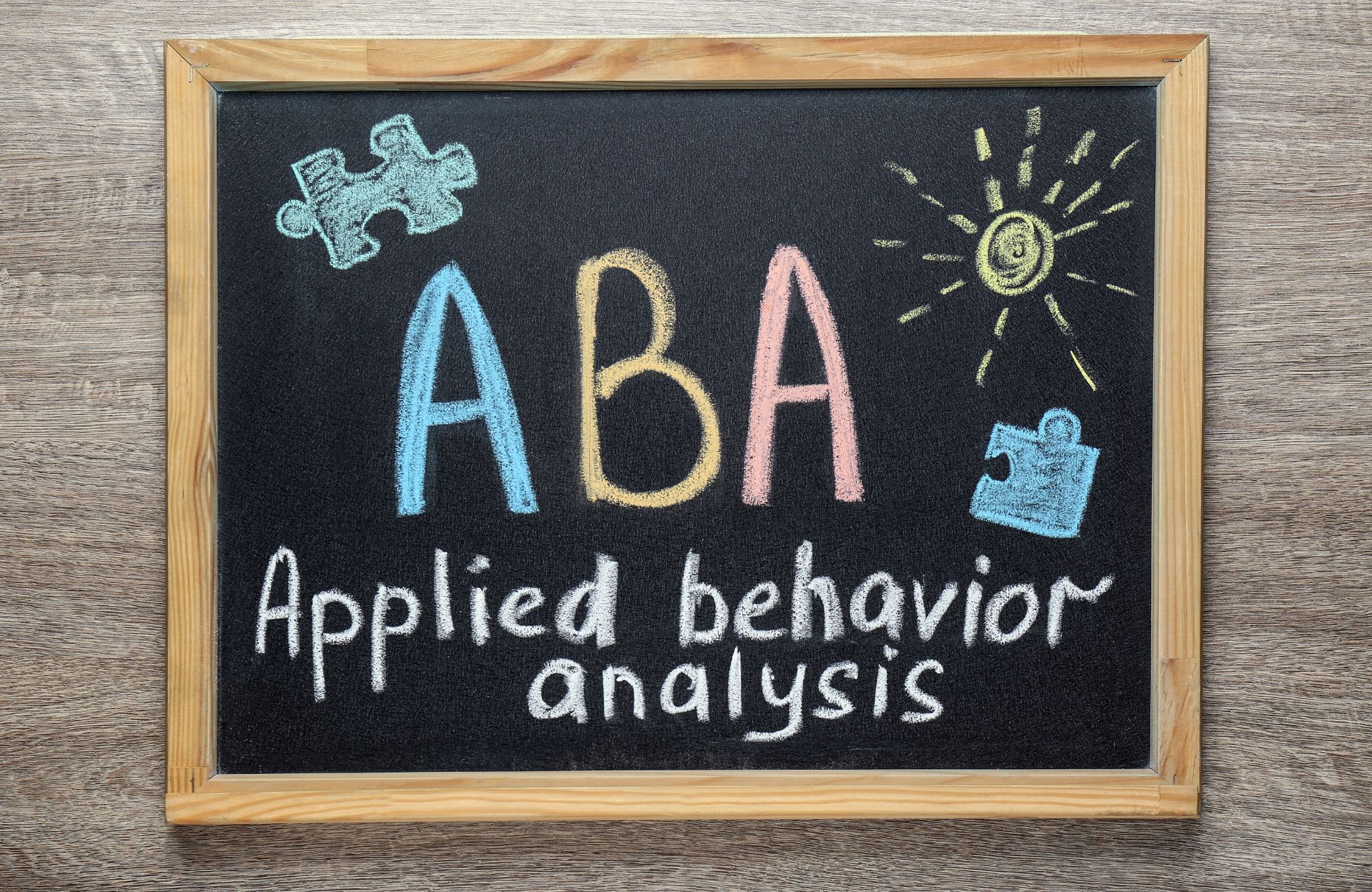For parents of children with autism spectrum disorder (ASD), navigating the educational system while seeking appropriate therapeutic interventions can feel like charting unexplored territory. Applied Behavior Analysis (ABA) therapy has emerged as one of the most effective evidence-based interventions for children with autism, but many parents are left wondering: “Do school districts provide ABA therapy?”
School districts can and often do provide ABA therapy. However, the process of securing these services, understanding your rights, and ensuring effective implementation requires knowledge and persistence.
According to the Centers for Disease Control and Prevention (CDC), approximately 1 in 36 children in the United States is diagnosed with autism spectrum disorder, and the financial burden on families is substantial. An estimated $17,000 or more annually compared to raising a child without autism. These costs increase significantly with more severe cases, making school-based services an essential resource for many families.
Understanding ABA Therapy in Educational Settings
Applied Behavior Analysis (ABA) therapy is a scientific, evidence-based approach that focuses on understanding and improving specific behaviors. When implemented correctly, ABA therapy can significantly enhance a child’s ability to communicate, develop social skills, reduce challenging behaviors, and increase learning capacity. All these are crucial elements for success in educational environments.
The Core Principles of ABA Therapy
At its foundation, ABA therapy relies on a few key principles:
- Positive reinforcement: Rewarding desired behaviors to increase their frequency
- Functional analysis: Identifying the purpose or function of behaviors
- Data-driven decision making: Collecting and analyzing information to guide interventions
- Skill acquisition: Breaking complex skills into manageable steps
- Generalization: Ensuring skills transfer across different settings and situations
When translated to school settings, these principles provide a framework for addressing both behavioral challenges and academic needs simultaneously.
School Based vs. Clinical ABA: Understanding the Differences
School based ABA therapy differs significantly from clinical settings in several important ways:
| Clinical ABA |
School Based ABA |
| Focuses primarily on developmental disabilities and behavioral goals |
Emphasizes educational goals and classroom functioning |
| Typically delivered in a controlled environment |
Implemented within natural learning environments |
| Often includes 20-40 hours weekly of intensive therapy |
Usually provides fewer direct service hours, integrated throughout the school day |
| Individualized therapy sessions |
Blend of one-on-one instruction, small group, and classroom-wide interventions |
| Parent training is centralized |
Collaborative approach with school staff |
| Primarily funded through health insurance or private insurance |
Funded through educational budgets and the Individuals with Disabilities Education Act (IDEA) |
“The beauty of school based ABA is that it allows children to practice skills in the very environment where they need to use them,” explains Dr. Rebecca Martinez, a lead Board Certified Behavior Analyst with extensive experience in educational settings. “When a child masters communication skills with peers during recess, that’s real world progress that immediately enhances their educational experience.”
Measurable Benefits of School Based ABA Therapy
Research consistently demonstrates the positive impact of ABA therapy in educational settings:
- Improved attention to tasks and instruction following
- Enhanced participation in classroom activities
- Development of appropriate social skills with peers
- Reduction in behaviors that interfere with learning
- Increased independence in daily school routines
- Academic skill acquisition and retention
- Greater inclusion opportunities with typically developing peers
For students with autism spectrum disorder and other developmental disabilities, these improvements can transform their educational experience from one of constant struggle to meaningful engagement and progress.
Key Metrics for ABA Success in Schools
Effective school-based ABA programs measure success through several objective metrics:
- Academic engagement time: The percentage of classroom time a student is actively engaged in learning
- Behavioral incident reduction: Measurable decreases in behaviors that impede learning
- Skill acquisition rate: How quickly a student masters new academic and functional skills
- Social interaction quality and quantity: Both the number and nature of peer interactions
- Generalization of skills: The transfer of learned skills across settings, people, and activities
- IEP goal progress: Objective measurement of advancement toward established educational goals
These metrics provide valuable data that guides ongoing interventions and demonstrates the effectiveness of school-based ABA services. They also provide concrete evidence when advocating for continued or enhanced services for your child.
Evidence Based Practices in School Settings
School based ABA therapy incorporates numerous evidence-based practices tailored to educational environments:
- Discrete Trial Teaching (DTT): Breaking skills down into manageable steps with clear instructions and immediate feedback
- Peer Mediated Instruction: Leveraging typically developing peers to model and reinforce appropriate behaviors
- Systematic Instruction: Consistent teaching methods with planned prompting and reinforcement
- Functional Behavior Assessments: Identifying the underlying causes of challenging behaviors
- Visual Supports: Using pictures, schedules, and other visual cues to enhance understanding
These approaches have demonstrated effectiveness in helping students with autism spectrum disorder achieve meaningful progress in educational settings.
Legal Framework – The Foundation for School Based ABA Services
Understanding your child’s rights is crucial when seeking ABA therapy services through your school district. Several federal laws provide the legal foundation for these services, with the Individuals with Disabilities Education Act (IDEA) being the cornerstone.
The Individuals with Disabilities Education Act (IDEA)
Originally enacted in 1975 and significantly updated several times since then, IDEA is the primary federal law governing special education services in public schools across the United States. This landmark legislation establishes the concept of a “Free Appropriate Public Education” (FAPE) for all eligible children with disabilities.
Key provisions of IDEA include:
- Free Appropriate Public Education (FAPE): Schools must provide appropriate educational services at no cost to families
- Least Restrictive Environment (LRE): Students should be educated with non disabled peers to the maximum extent appropriate
- Individualized Education Program (IEP): Each student must have a personalized plan outlining services and goals
- Procedural safeguards: Parents have specific rights in the decision making process
- Early intervention services: Support for children from birth to age three
“IDEA doesn’t specifically mention ABA therapy by name,” explains Jennifer Williams, a Special Education Advocate, “but its mandate for ‘appropriate’ education means that if ABA therapy is necessary for a student to make meaningful progress, the school district should provide it.”
This interpretation has been reinforced by numerous court decisions, including the landmark 2017 Supreme Court case Endrew F. v. Douglas County School District, which raised the standard for what constitutes an “appropriate” education. The Court ruled that schools must provide an education “reasonably calculated to enable a child to make progress appropriate in light of the child’s circumstances.” A standard that often requires evidence-based interventions like ABA therapy for students with autism.
Section 504 of the Rehabilitation Act
Another important legal protection comes from Section 504 of the Rehabilitation Act of 1973, which prohibits discrimination against individuals with disabilities in programs receiving federal funding, including public schools.
Under Section 504, students who don’t qualify for services under IDEA may still be eligible for accommodations and supports, including elements of ABA therapy, through a “504 Plan.” While less comprehensive than an IEP, a 504 Plan can provide critical support for students who need ABA strategies but don’t meet the specific eligibility criteria for special education services.
Americans with Disabilities Act (ADA)
The Americans with Disabilities Act further reinforces these protections by prohibiting discrimination and ensuring equal opportunity for individuals with disabilities in public accommodations, including private schools that receive no federal funding.
This means that even in settings not covered by IDEA, students with autism may have legal grounds for requesting reasonable accommodations that include ABA-based interventions.
State Specific Legislation
Beyond federal protections, many states have enacted their own laws regarding autism treatment and educational services. Some states have specific autism insurance mandates requiring health insurance companies and insurance plans to cover ABA therapy. Others have expanded educational rights beyond those guaranteed by federal law.
For example:
- California’s Department of Education has specific guidelines for implementing behaviorally based interventions in school settings
- Florida has the PLAY Project, which incorporates ABA principles into early intervention
- Ohio recently expanded requirements for ABA therapy as an early intervention service
- Texas has the Texas Autism Resource Guide for Effective Teaching (TARGET), which guides on implementing ABA strategies
“State laws can significantly impact how school districts provide ABA therapy,” notes Michael Thompson, a legal consultant specializing in special education law. “Some states have much more specific mandates than others, which is why parents must understand both federal and state level protections.”
Recent Legal Precedents
Several recent court cases have strengthened the legal basis for requesting school-based ABA therapy:
- Endrew F. v. Douglas County School District (2017): The Supreme Court ruled that schools must provide an education “reasonably calculated to enable a child to make progress appropriate in light of the child’s circumstances”
- A.M. v. Fresno Unified School District (2021): The court determined that the denial of ABA services prevented the student from receiving an educational benefit
- H.C. v. Farmington Public Schools (2020): The court ruled in favor of parents seeking ABA services for their child based on evidence of its effectiveness
These cases have established important precedents that strengthen parents’ ability to advocate for appropriate ABA therapy services within the school district.
Medical Necessity vs. Educational Need
One common area of confusion is the distinction between “medical necessity” (required for health insurance coverage) and “educational need” (required for school services). While private health insurance companies typically require a demonstration of medical necessity for ABA therapy coverage, school districts look at educational impact.
This distinction is important because:
- Insurance funded ABA therapy focuses on developmental and adaptive skills
- School-based ABA therapy must be tied to educational goals
- Some children may qualify for both insurance-covered and school-based services
- Documentation requirements differ between the two systems
Understanding this distinction helps parents appropriately frame their requests and expectations when seeking ABA therapy through the school district versus private insurance.
Conclusion: Do School Districts Provide ABA Therapy
Securing ABA therapy services through your public school district requires knowledge, persistence, and effective advocacy, but the benefits for your child can be transformative. As we’ve explored throughout this guide, school districts can and should provide ABA therapy when it’s necessary for a student with autism spectrum disorder to receive a free appropriate public education. While the path may involve navigating complex legal frameworks, eligibility determinations, and implementation challenges, remember you’re not alone in this journey. By understanding your rights, collaborating effectively with school staff, and connecting with reputable ABA therapy providers, you can ensure your child receives the personalized support they need to thrive academically and socially. The right ABA provider can make all the difference, both in navigating health insurance requirements and in developing effective school-based programs. Contact Affinity ABC today for support in accessing these essential services because every child deserves the opportunity to reach their full potential.
At Affinity ABC, we provide personalized, evidence-based care to help children with autism thrive. Whether it is in home therapy, social skills development, or school support, our dedicated team is here to support your family every step of the way. Take the first step toward unlocking your child’s potential. Contact us today at (505) 584 2634 or admin@affinityabc.com to learn more about our services and how we can help.
FAQ Section
What is the downside of ABA therapy?
Potential downsides include intensive time commitments for families, concerns about focusing too heavily on compliance rather than understanding, and stress for some children due to the structured nature of therapy. Traditional approaches have been criticized for not respecting autistic individuals’ natural behaviors, though modern practices have evolved to be more person-centered.
What is the average cost of an ABA session?
ABA therapy typically costs $120-200 per hour with a BCBA and $50-75 per hour with an RBT. With children often receiving 10-40 hours weekly, annual costs can reach $50,000+, though insurance, Medicaid, and school district funding can significantly reduce out-of-pocket expenses.
Where do ABA therapists make the most money?
ABA therapists earn highest salaries in high-cost metropolitan areas like New York and San Francisco, with BCBAs making $90,000-120,000 annually. Private clinics and consulting firms typically pay more than school districts, while therapists with advanced credentials and specialized expertise command premium salaries regardless of location.









